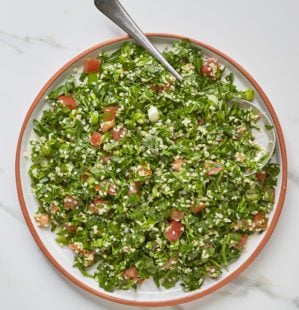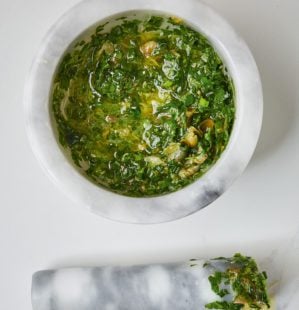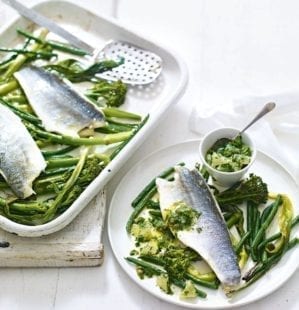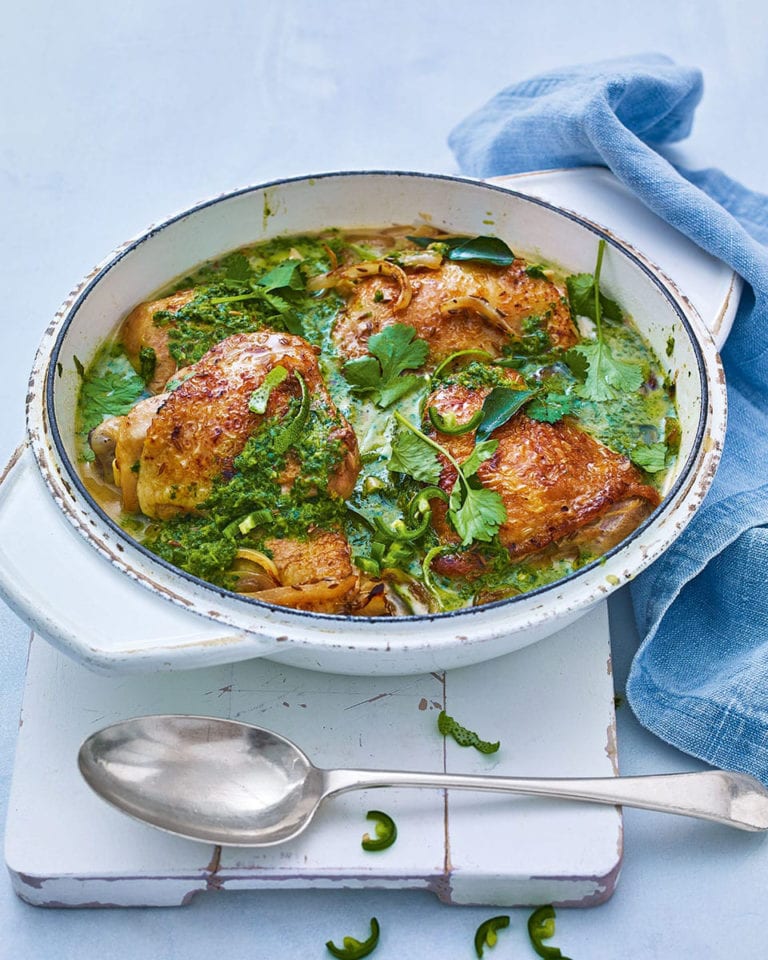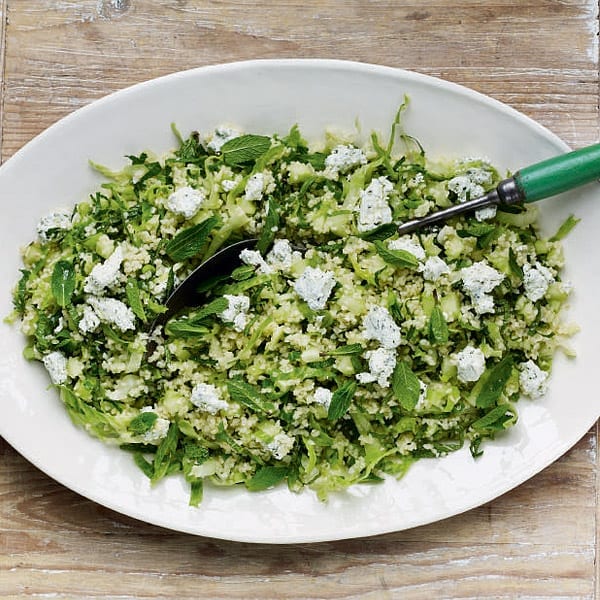How to get the best out of your herbs
Adding fragrance, freshness and colour, herbs can transform a dish from dull to dazzling, so it’s no surprise we’re using more of them in our cooking – but what’s the ethical and environmental impact? We asked Clare Finney to investigate the best way to source those green flavour bombs – and how to make the most of them…
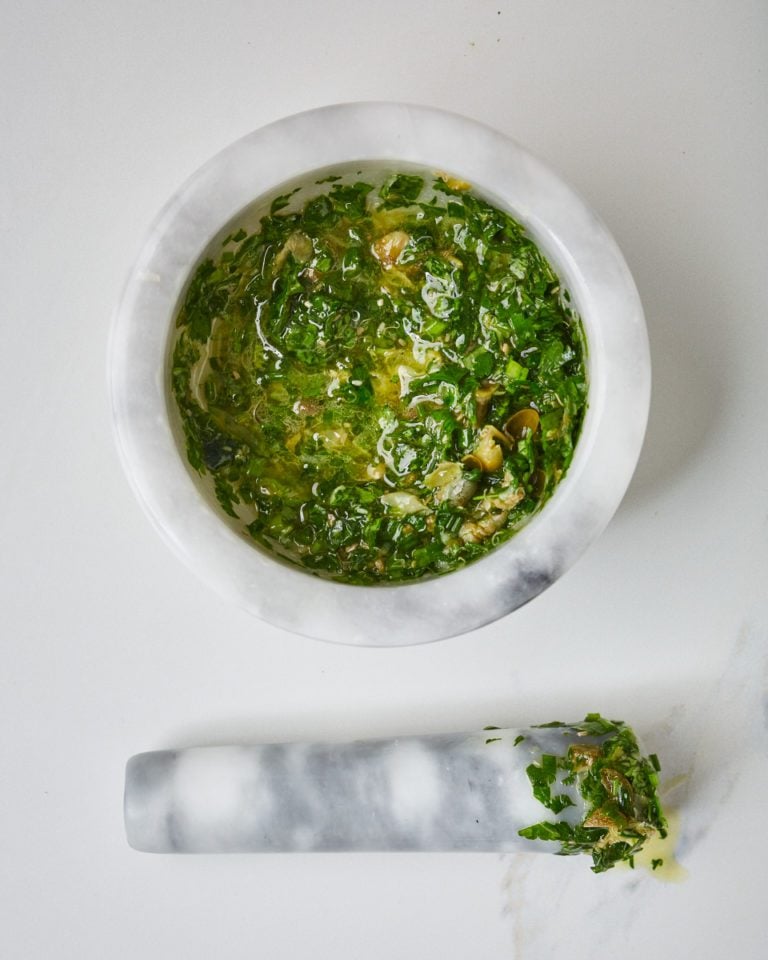
Our herby cooking habits have changed over the past 10-15 years. “We’re shifting from meat and two veg towards a more Ottolenghi-style tumble of flavours and textures, and herbs play a big part in that,” says delicious. book reviewer Mark Diacono, grower and author of Herbs: A Cook’s Companion. “We’ve become more adventurous. We see that in the supermarket selection, which now includes things like lemon thyme and greek basil.”
Where once we used jars of mixed herbs or, at a push, a sprinkle of fresh parsley, our foodie culture has led us into cuisines such as Georgian, Persian and Vietnamese that demand fistfuls of the green stuff. Sabrina Ghayour, queen of Persian cooking, is a major cheerleader for herbs. “Persian food is all about them. We don’t have spices – herbs and citrus are our flavour profiles,” she explains. “If a dish demands parsley, it should have parsley on it and in it. I want tonnes of it. I want flavour and freshness. We shouldn’t be treating herbs as garnishes.”
Are dried herbs redundant?
Not at all – they’re just different. “I’m not a dried herb snob – in Iran they’re a big deal,” says Sabrina. “But they’re wildly different in taste and texture. I love the intensity of dried oregano and mint, but they’re not the same as fresh.” It depends on what you’re cooking, Mark agrees. “Dried mint isn’t going near my mojito, but for a raita, absolutely.” If you’re growing herbs at scale, drying them can be a good way to preserve them, says Jan Ostle, who grows herbs for Wilsons, his Bristol restaurant.
How can I avoid herb waste?
“You can use more of the herb than you think. Tie the woodier stalks together and throw them into stews,” says Joe Woodhouse, food photographer and author of Your Daily Veg. Try new combinations too. “You have to combine herbs creatively,” says Jekka McVicar, renowned organic herb grower and retailer. What grows together goes together, so work with the seasons – and with plant families, says McVicar: “Carrot and coriander are from the same family. That’s why they work well.”
Don’t be scared to freeze herbs, but do process them first. “Purée them and freeze in an ice cube tray, or make a pesto to freeze,” says Jan Ostle. Sabrina Ghayour is a big fan of sauces to use up herbs. “I make pesto with whatever’s knocking around. I also make kuku, which is like a bright green frittata of barberries, walnuts and herbs.”
Where do supermarket herbs come from?
Many herbs sold in plastic packets by supermarkets are grown in countries with more consistent heat and light than the UK’s capricious climate. Spain, Kenya, Ethiopia and Morocco are a few of the places where herbs are grown, picked, transported in refrigerated trucks to the airport, then flown in refrigerated containers to the UK. That’s a lot of food miles. Supermarkets’ potted herbs are a different matter, however: “All our living herbs – sold in pots – are grown in glasshouses on the south coast of England,” says Waitrose’s technical manager for produce Darren Sturt.
Industrially produced fish, meat, dairy, veg and fruit have a more obvious ecological impact on the world, but that doesn’t mean herbs should be overlooked, says Mark Diacono. “They seem peripheral because they’re small and light – but to shift them around the world keeping them cold costs money and carbon – and it doesn’t taste as great as a herb you’ve grown, picked and used within 24 hours.”
“When herbs are a few weeks old the flavours are much duller,” says Jan Ostle. They’re better local and seasonal – just like strawberries and asparagus. The method of growing is worth bearing in mind, too. “If we really want to be sustainable, we need to start with seasonality, then apply parameters,” says Mark. “Local is one, then also organic – because the amount of carbon released from using nitrogen fertilisers is extraordinary.” Besides, says Jekka Mc Vicar, organic tastes better. “Everyone who tastes my herbs says they’re much stronger in flavour than what they’re used to – and that’s down to the soil and my potting compost.”
What about hydroponic farming?
It’s an interesting one – and big news. Hydroponic farming entails growing plants in water or a fabricated substrate, in buildings that may or maynot have windows (which means LED lighting). Being a form of vertical farming, it’s great at utilising space, particularly in urban areas, and because the water can be recirculated, treated and filtered many times over, it’s great for reducing water usage. Crate to Plate, the London hydroponic farms started by Sebastien Sainsbury of the supermarket clan, claim to use 95% less water and, with mini sites across the city, can get food to customers with virtually no food miles. Meanwhile Harvest London, another fast-expanding vertical grower, now has its living basil, sold in paper cones, on sale in Planet Organic stores.
Jamie Burrows, founder and CEO of Vertical Futures, another of London’s hydroponic farms, says: “Indoor-grown crops are also soil free and don’t use pesticides, herbicides or fungicides – so they’re not faced with the problems that insects or soil cause.” Vertical farming isn’t all upside, though. Some argue its intensive energy costs detract from the advantages. “Many of these facilities need lots of heating and lighting, which costs a lot compared to natural heat and light,” says Darren Sturt. That’s why Waitrose has stuck to growing living herbs under glass.
Another complaint about hydroponics is the separation of food from soil, and all that means for our health and the planet’s health. There are concerns our bodies may not be able to access the same nutrients if they’ve been delivered to plants artificially. Indeed, the UK’s largest organic certification body, the Soil Association (SA), refuses to grant certification to hydroponic farms on the grounds of its founding principle: that ‘the health of soil, plant, animal and man is one’.
Yet, as Jamie Burrows points out, the issues around energy costs and nutrition aren’t cut and dried. “There’s some evidence that beneficial bacteria in the soil support better gut health, but these bacteria can be added into indoor farming systems. As for energy, he concedes the LED and other tech required to maintain an optimal environment indoors are more expensive compared to outdoor-grown crops, but adds that outdoor-grown crops use energy and resources in sowing, tending and harvesting (and there can be poor crops), plus the energy required to make the chemicals used to feed and protect them. “The key metric we look at is how much energy is needed to produce 1kg of a crop and, more importantly, where is the energy sourced from? If all energy used to power indoor farms comes from renewable sources and/or energy from waste (which we’re getting to), the problem with energy almost entirely falls away.”
How to keep herbs fresh
Upsetting as those little plastic packets are to look at – and imagine in landfill – they have advantages. “They not only help protect herbs in transit but can also help them last longer when you get them home. Our packaging has perforations to allow airflow, which helps keep the products fresh,” explains Darren Sturt. Keep the empty packaging and recycle it when you recycle your plastic bags in store.
With the exception of basil and thai basil, Darren recommends storing shop-bought herbs in the fridge in an airtight container. Charmingly, Jan Ostle restaurant treats its cut herbs like flowers: “We cut off the base of the stem, then put them in water so they continue to stay fresh and alive,” he says. If you don’t fancy herbs as a table centrepiece, wrap the stalks in a damp cloth and store in the fridge salad drawer.
Growing your own
If you’re looking to grow herbs, avoid supermarket living herbs. “In general, supermarkets will sell varieties chosen to be very productive quickly. They’ll have been grown under heat, in a growing medium that’s fine for
a short life,” says Mark Diacono. His advice – and Jekka McVicar’s – is to buy from people who grow plants for a living. “The best varieties and flavours come from garden centres and nurseries.”
Joe Woodhouse’s wife is Olia Hercules, whose cooking embraces herbs big-time. The couple grow almost every herb they use: “Thymes, chives, garlic, oregano, marjoram – we planted them three years ago and they keep coming back.” Even before having a garden, Woodhouse grew herbs in window boxes in a flat. The only herbs the couple don’t grow are basil and parsley: “You can get them cheaply and easily so it’s easier for someone else to grow – and basil doesn’t thrive.”
Though Jekka McVicar has a herb garden – complete with polytunnels – at her disposal, she grows window boxes too, so she can better advise customers. “You have to water each morning – and make sure they can drain. People keep herbs far too wet,” she says. Feeding is important too, says Mark Diacono: “A plant can’t feed itself from the soil once it’s in a pot.” Outdoors, rosemary and mint fare well. Chives do fairly well either indoors or outdoors. “Pot herbs a size up and give them a liquid feed. That’s it – as long as you don’t overwater or overharvest, it’s the easiest thing.”
So, if you can, get growing. It’s the most sustainable and flavoursome option of the lot.
Really herby recipes to make the most of herbs
Tabbouleh is one of those dishes where herbs are the main ingredient rather than a final hit of freshness. It’s great as part of a mezze of Middle Eastern dishes or with grilled lamb and pittas
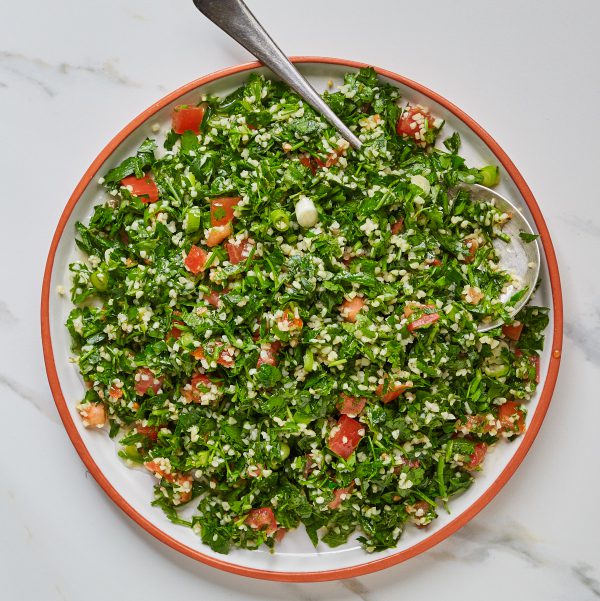
These ribbons of pasta herb-decorated pasta create wow-factor, even dressed with a simple sauce. Coat the strands in just a little butter or olive oil, or keep them as sheets to make the kind of ravioli you’d expect to see in a fancy restaurant.
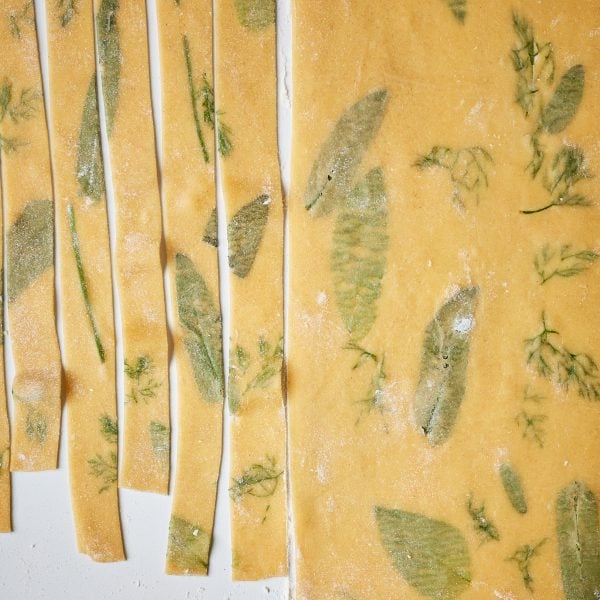
From Italy’s salsa verde and Argentina’s chimichurri to Morocco’s chermoula and India’s fresh chutneys, herbs are a sauce star the world over, whenever you need a zingy hit of flavour. (The acidic vinegar/citrus juice plays an important role here – see Be A Better Cook, p74.) This flexible recipe takes inspiration from the world’s great fresh green sauces but comes down to what you have in the fridge. Drizzle it over everything from breakfast eggs and grilled chicken to salads, or treat it like a dip
for crisps and raw veg.
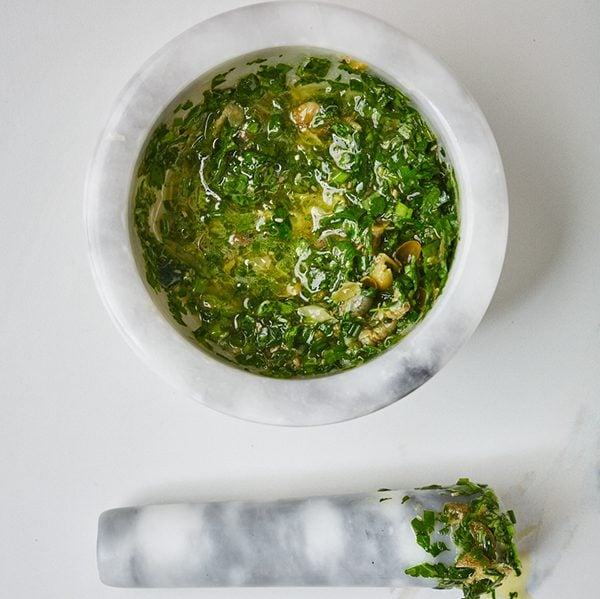
Subscribe to our magazine
Food stories, skills and tested recipes, straight to your door... Enjoy 5 issues for just £5 with our special introductory offer.
Subscribe
Unleash your inner chef
Looking for inspiration? Receive the latest recipes with our newsletter
